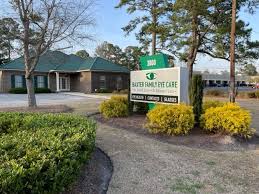It is your life’s work. You have poured your heart and soul into the practice and now it is time to put a value on it. How do you do that fairly and accurately?
The fact is that buying and selling a private practice is an emotional issue. Often the seller thinks they didn’t get enough for it and the buyer thinks they could have gotten a better deal.
Selling is not the only reason for getting a valuation, however. Partnerships, financing, some tax situations like stock options, divorce, and life insurance can all call for a valuation of some kind.
A properly-done valuation from a reputable source can help alleviate some of those anxieties. A third-party opinion, based on current market facts and accepted methods can go a long way in ensuring a smooth transaction.
There are three categories of valuation methods. Often the context of the transaction can help determine which method is best. For example, lenders are interested in net asset value – what are the assets worth should they need to be liquidated? Speculators on the other hand are interested in the potential for future growth and earnings.
Objective methods
The most common method of purchase is an asset sale. In an asset sale, the assets of one entity are transferred to the balance sheet of another. For the seller that means a tax hit on the gains but for the buyer a chance to depreciate the sale at the time of purchase. It is popular because the assets are considered “free and clear” of all liens and encumbrances. The buyer has a chance to “start fresh” with a new entity and sometimes a new name, brand, etc. The downside is the buyer has to also start over with credentialing, vendor relationships, and brand building.
A going concern asset-based approach takes a look at the company’s balance sheet, lists the business’s total assets, and subtracts its total liabilities. This is also called book value.
A liquidation asset-based approach determines the liquidation value, or the net cash that would be received if all assets were sold and liabilities paid off.
An asset-based appraisal is a method that doesn’t require complicated math. Add up the value of your assets, subtract your liabilities, and you have the total value of your business. There are two approaches you can use:
- Going concern. This approach assumes the business stays up and running and that you won’t be selling off major assets.
- This approach bases the valuation of the business on what you’d get if you closed it, sold the assets, and paid off your debts. This gives you a lowball valuation because liquidation sales don’t usually bring the market price.
The drawback to an asset-based valuation is that a good business is worth more than the value of the equipment and inventory. These methods also assume that the business will not remain viable and that the goodwill of the practice – an essential element of a professional practice – is not worth much.
We use a modified net asset value approach that presumes the assets will be free of liabilities and the seller will make enough from the sale to pay off any debts and taxes and still have something left.
It is the most clear cut and objective method because it is hard to argue with. A practice that has been in business for more than 20 years had more goodwill than one five years or less. Frames are worth a set amount of cost basis. Instruments have a value based on their age, condition, and longevity.
Tangible assets have four basic types of values:
- In-place value – assumes the asset has value because it doesn’t need to be replaced. Chairs and stands, phoropters, handhelds, lenses, and lensometers are examples of instruments with strong in-place values. They work well and get the job done.
- Fair Market Value – different from “trade-in,” FMV is what an asset is worth on the open market. eBay is a good place to see what instruments are being listed for and equipment brokers are good at knowing the FMV of instruments. Keep in mind that what you paid for something has little bearing on how much it is worth. “It is worth as much as what someone will pay for it.” We use several different brokers and sources to determine fair market value of capital assets.
- Thrift store value – is often used for furniture and décor, supplies, and computers. If you had a yard sale, what price would you put on it?
- Book value – the least value of all methods for capital assets, it is the cost less depreciation. Often confused with “net value” which is the value less liability, book value is carried on the books and the sale of those assets can result in tax liabilities from recaptured depreciation – so be prepared for that.
Less tangible assets like goodwill, contracts, and patents are based on present and future value to the business. Accounts receivables, if included, are usually discounted for noncollectable.
Subjective methods
Market value approaches to business valuation attempt to establish the value of your business by comparing your company to similar ones that have recently sold. The idea is similar to using real estate comps to value a house. This method only works well if there are a sufficient number of similar businesses to compare.
Often known as the “rule of thumb” method, it can be a quick way to estimate the value of a business for insurance and financing purposes. The method uses a rule of thumb factor applied to revenue to calculate the value of the business. Many agreements refer to it as a “formula price” as well.
In eye care today expect 50-75% of a weighted three year average of revenue depending on the condition of the practice. An experienced and educated guess can help narrow down the factors. This is where a third-party opinion is especially helpful.
Factors include:
- Location
- Reputation
- Growth
- Staffing
- Key metrics – revenue per exam, capture rates, etc
Earnings Multiplication Method assumes that for professional practices 2-4 multiples are best. A multiple is the price divided by earnings. For example, a practice selling for $1 million with earnings or profit of $250,000 a year would be a 4 multiple. The most likely fair market value would be more like $500-750,000.
This is a very subjective way of calculating a business and depends on the buyer’s confidence in being able to decrease costs, increase sales, and keep the business running well beyond the investment payback period. Groups can pull it off with their economy of scale in buying, centralized services, and marketing. Individuals investing in a private practice would be less likely to affect profitability that much.
Speculative methods
Mergers often favor speculative methods for establishing the value of the entities joining forces. As the name implies, the speculative methods are an attempt to see the future and the return on investment of a business. Sometimes the investment is as simple as locking in supply channels. Sometimes the investment is a roll of the dice to generate needed capital. Both are common In our industry and have their place.
Fro the average private practice investor, however, the speculative methods are hard to understand and can give a false picture of the future. No one expected a global pandemic to stop business for several weeks either. Things can and do happen.
EBITDA is one method to guess at future earning potential for valuing a business. EBITDA uses financial statements to determine a value based on revenues. Two formulas are common:
- EBITDA=net profit+interest+taxes+depreciation and amortization
- EBITDA=operating income+depreciation and amortization
EBITDA can be used to analyze and compare profitability among companies and industries as it eliminates the effects of financing and accounting decisions. In other words, an organization that uses a large amount of cash flow for interest and depreciation may not do that under other circumstances like in a merger. Investors and analysts will use multiple profit metrics when analyzing the financial performance of a company since EBITDA does have some limitations. Good examples of metrics near and dear to investors hearts are multiples (earnings compared to price) and debt ratios (liabilities to asset value.)
The calculation of EBITDA is not officially regulated allowing companies to massage the figure to make their company look more profitable. An unscrupulous company could use one calculation method one year and switch the calculation the following year if the second formula made the company appear more profitable. If the calculation method remains constant from year to year, EBITDA can be a very useful metric for comparing historical data.
Income Approach is another way to value a business based on adding up the annual earnings into a set period in the future. For common purposes, we use five years of forecasting but that could be modified like in the case of a buy-sell where the period of the buy out in a partnership is shorter than five years.
For example, a practice that has made a profit of $100,000 annually for the last three years and is situated to continue successfully for the next five years might be valued at five times earnings, or $500,000.
Capitalizing Past Earning determines an expected level of cash flow for the company using a company’s record of past earnings, normalizes them for unusual revenue or expenses, and multiplies the expected normalized cash flows by a capitalization factor. The capitalization factor is a reflection of what rate of return a reasonable purchaser would expect on the investment, as well as a measure of the risk that the expected earnings will not be achieved.
Discounted Future Earnings is another earning value approach to business valuation where instead of an average of past earnings, an average of the trend of predicted future earnings is used and divided by the capitalization factor.
Our valuations commonly use a Discounted Future Earnings approach for five years to determine a reasonable return on the investment and offer the buyer a discount for investing in the practice.
The speculative methods are purely that and should be given the least amount of weight when determining a purchase price.
To Summarize
- A properly done valuation is worth the time and money involved to give a good opinion on the value of a practice, regardless of the reason for that value.
- Methods vary based on expectations and purpose.
- A good valuation uses at least three methods to arrive at a suggested value – objective, subjective, and speculative.
- The practice is worth what someone is willing to pay for it.






